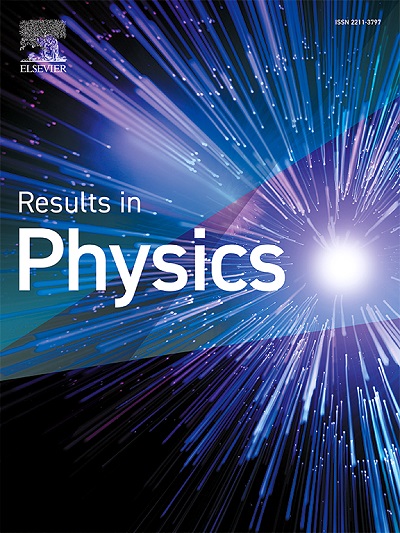Delocalized Ag−Ag dimer rattling mode contributes to reduced thermal conductivity and enhanced thermoelectric performance in AgAs2
IF 4.4
2区 物理与天体物理
Q2 MATERIALS SCIENCE, MULTIDISCIPLINARY
引用次数: 0
Abstract
Layered thermoelectric materials inherently feature a decoupling of electron and phonon transport, attributed to the high electrical conductivity within the covalent atomic layers and the increased phonon scattering at the layer boundaries. However, the weak atomic interactions along the out-of-plane direction present a considerable obstacle in enhancing the thermoelectric performance of these materials. In this work, we employ RuAs4 (FeAs4), SrAs4 (CaAs4), and AgAs2 (CuAs2) as representative compounds to theoretically explore the influence of bonding characteristics on the carrier transport in quasi-layered structures. We find that, in comparison to RuAs4 (FeAs4) with a similar atomic mass and crystal structure, the room temperature lattice thermal conductivity can be dramatically decreased from 10.2 (5.6) W/mK to 0.83 (1.69) W/mK in SrAs4 (CaAs4). This reduction is linked to the weak ionic interaction between the covalently bonded As layers and the Sr (Ca) atoms, resembling a rattling model that effectively scatters heat-conducting acoustic phonons. Conversely, the subvalent Ag2 dimers and delocalized Ag−As bonds in AgAs2 ensure rational electrical transport while preserving significant lattice anharmonicity due to the dimer clusters’ rattler-like behavior. Coupled with an enhanced Seebeck coefficient resulting from the elevated valence band degeneracy, we predict an p-type average thermoelectric ZT of 2.8 at 400 K. Our results provide an approach for modulating carrier transport in layered thermoelectrics via atomic or cluster intercalation, potentially serving as a guide for identifying novel thermoelectric materials.

离域Ag−Ag二聚体嘎嘎模式有助于降低AgAs2的导热性和提高热电性能
层状热电材料固有地具有电子和声子输运的解耦特性,这归因于共价原子层内的高导电性和层边界声子散射的增加。然而,沿面外方向的弱原子相互作用在提高这些材料的热电性能方面存在相当大的障碍。本文以RuAs4 (FeAs4)、SrAs4 (CaAs4)和AgAs2 (CuAs2)为代表化合物,从理论上探讨了键合特性对准层状结构中载流子输运的影响。我们发现,与具有相似原子质量和晶体结构的RuAs4 (FeAs4)相比,SrAs4 (CaAs4)的室温晶格导热系数可以从10.2 (5.6)W/mK显著降低到0.83 (1.69)W/mK。这种还原与共价键成的As层和Sr (Ca)原子之间的弱离子相互作用有关,类似于有效散射热传导声子的嘎嘎声模型。相反,亚价Ag2二聚体和AgAs2中的离域Ag - As键确保了合理的电传输,同时由于二聚体簇的响尾蛇行为而保持了显著的晶格非谐和性。再加上由于价带简并度升高而导致的塞贝克系数增强,我们预测在400 K时p型平均热电ZT为2.8。我们的研究结果提供了一种通过原子或簇嵌入来调制层状热电材料中载流子输运的方法,可能作为识别新型热电材料的指南。
本文章由计算机程序翻译,如有差异,请以英文原文为准。
求助全文
约1分钟内获得全文
求助全文
来源期刊

Results in Physics
MATERIALS SCIENCE, MULTIDISCIPLINARYPHYSIC-PHYSICS, MULTIDISCIPLINARY
CiteScore
8.70
自引率
9.40%
发文量
754
审稿时长
50 days
期刊介绍:
Results in Physics is an open access journal offering authors the opportunity to publish in all fundamental and interdisciplinary areas of physics, materials science, and applied physics. Papers of a theoretical, computational, and experimental nature are all welcome. Results in Physics accepts papers that are scientifically sound, technically correct and provide valuable new knowledge to the physics community. Topics such as three-dimensional flow and magnetohydrodynamics are not within the scope of Results in Physics.
Results in Physics welcomes three types of papers:
1. Full research papers
2. Microarticles: very short papers, no longer than two pages. They may consist of a single, but well-described piece of information, such as:
- Data and/or a plot plus a description
- Description of a new method or instrumentation
- Negative results
- Concept or design study
3. Letters to the Editor: Letters discussing a recent article published in Results in Physics are welcome. These are objective, constructive, or educational critiques of papers published in Results in Physics. Accepted letters will be sent to the author of the original paper for a response. Each letter and response is published together. Letters should be received within 8 weeks of the article''s publication. They should not exceed 750 words of text and 10 references.
 求助内容:
求助内容: 应助结果提醒方式:
应助结果提醒方式:


